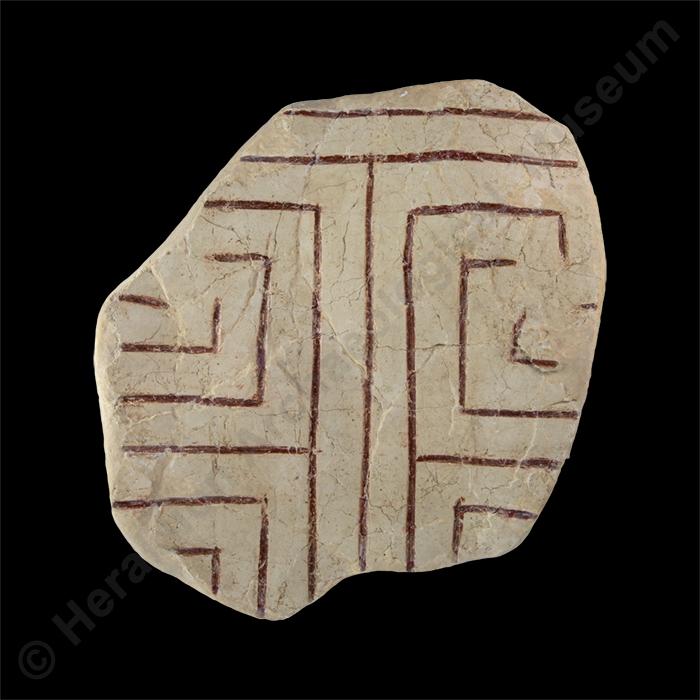Labyrinth Fresco. Painted floor plasters with labyrinth theme
Τ50
Plaster
Incomplete
20Χ21.5 cm.
Knossos
Palace
Middle-Late Bronze Age, Neopalatial period. Middle Minoan ΙΙΙΒ-Late Minoan ΙΑ period:
1650- 1500 BC:
Gallery:
XIIICase:
132Exhibition thematic unit:
Minoan wall paintingsThe world of the court
Description
Arthur Evans, the excavator of Knossos, believed that in the painted fresco fragments with a maze-like design he had found the mythical labyrinth, and named the whole composition the “Labyrinth Fresco”. According to Maria Shaw, it would have exactly fitted Corridor 94 in the East Wing of the palace of Knossos, meaning that these are floor plasters. Moreover, the pattern was incised in the surface of the plaster and the grooves filled with a bright red colour, a technique mainly applied to floors; the most characteristic examples of such floors come from the palace of Phaistos. However, the design is strikingly similar to the floor depicted in a wall painting from Tell el-Dab‘a in the Nile Delta, where the labyrinth theme forms part of a larger bull-leaping scene. One possible explanation is that the painted plasters from Knossos were the model for the Tell el-Dab‘a painting. This may have been created by Minoan artists, indicating international contacts between the Aegean and Egypt in the second millennium BC. Shaw also suggests that bull-leaping at Knossos may have taken place in an area east of the palace, which would explain the location of the corridor with the labyrinth floor nearby.Bibliography:
Evans, A. The Palace of Minos: A comparative account of the successive stages of the early Cretan civilization as illustrated by the discoveries at Knossos, Vol. I, Macmillan and Company, limited, 1921, 356-7. Annual of the British School at Athens, 107, 143-159.Author:
K. A.Photographs' metadata
